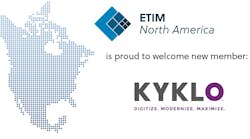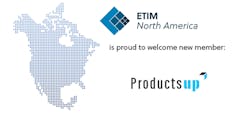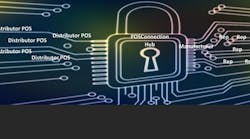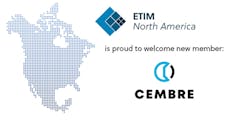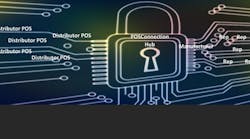Hundreds of millions of people are now globally connected together via one single high-speed two-way network — the Internet. Many users in the business world are leveraging the Internet's two-way aspect in their online products, and the Web is now the source of much of the innovation in business.
Today's World Wide Web is a larger ecosystem that offers far more brainpower and activity than any single organization could ever hope to match. One of the reasons for this expanded capability is Web 2.0. According to www.wikipedia.com, Web 2.0 is the second-generation of Web-based communities and hosted services such as social-networking sites, wikis and blogs. They aim to facilitate creativity, collaboration and sharing among users. Other examples of Web 2.0 applications include RSS (really simple syndication) feeds and podcasts (see sidebar for definitions of this Web 2.0 terminology). Business consultants such as Gartner, Forrester, and McKinsey believe organizations should start heading down the Web 2.0 path. Here are several specific examples of successful Web 2.0-based technologies:
-
People used to say they would never buy an automobile online. In 2005, eBay sold $11 billion worth of automobiles. Nearly 750,000 people make a living on eBay.
-
Wikipedia, the Web-based collaborative encyclopedia, became the world's largest reference work in just four years.
-
A European startup called Skype, which allows individuals to call each other over the Internet, was purchased by eBay for $4.1 billion.
-
A Vancouver-based gaming company invented a photo sharing program called Flickr and sold the company to Yahoo in less than two years for $35 million. Flickr hosts over 70 million photos and has over three million users.
-
Microsoft invested over $6 billion of R&D toward software as a service (SAAS) in 2006.
-
MySpace was created in 2003 and sold to Rupert Murdoch's News Corp in 2005 for $580 million.
-
Craig's List has become the seventh-largest Website in the world and is decimating the classified advertising industry because it can't compete against free listings.
EBay and Web 2.0
One Web 2.0 application that really takes advantage of the capabilities and advantages of this technology is the new eBay Desktop application built on Adobe AIR. This application enables eBay to expand its services to include a powerful, easy-to-use desktop application that provides customers with next-generation online shopping experiences. As a result, users can experience the world's largest online marketplace and engage with eBay services using a compact, intuitive desktop application. The eBay desktop experience delivers enhanced capabilities not available in standard Web browsers.
Trading on eBay is a time-sensitive activity that requires constant attention. Rather than continuously watching bidding activity on the eBay Website or a third-party site, or constantly monitoring their email, users can now receive alerts via their eBay Desktop application whenever a change is made to a specified item. The instant a bid comes in, the user is notified without having to check e-mail or open a browser.
RSS feeds
Buyers can set up searches and RSS feeds for favorite types of items. For example, if someone likes vintage t-shirts, he can set up an RSS feed and have all auction detail that matches his search criteria sent directly to his desktop.
EMobileCat catalogs
In the electrical industry, eMobileCat (www.emobilecat.com) produces online catalogs utilizing Web 2.0 technology. It started using this technology for its Web and desktop applications even before eBay. The business model that eMobileCat uses enables next-generation online buying for distributors, contractors, industrial and commercial customers via a simple desktop resulting in increased sales, improved customer service and customer loyalty.
Web 2.0 technologies can help companies in the electrical market improve revenue growth, increase their operating margins and utilize their assets more efficiently. Here are some specific activities to consider:
-
Give away free desktop software applications that make it easier for your trading partners to access your company's products, services and staff.
-
Create an online community where companies can exchange ideas and best practices.
-
Utilize the Internet's search capabilities to find new customers. Online prospecting efforts cost a fraction of traditional sales efforts.
-
Use Web self-service principles to bypass expensive direct and indirect sales and billing channels.
-
Shift to a hosted software as a service (SAAS) model that can eliminate or reduce support and license fees as well as security requirements.
-
Help employees share knowledge in an internal company pipeline so that you can capture ideas from your employees that might turn into new market opportunities or offerings.
Your greatest risk with Web 2.0 technology is inaction. As with any new technology, it's “buyer beware.” Many Web 2.0 applications don't work properly yet. The advantages in collaboration, connectivity and community that Web 2.0 applications can offer are real, but don't be fooled by the hype from some potential vendors. Test and evaluate before you put a Web 2.0 application into play with your business.
If you are ready to apply some Web 2.0 applications in your company, brainstorm with your staff on how you can use these new technologies in your business. The most important question to ask may be, “What can we do better with Web 2.0 than with our existing technological platform?”
The future ain't what it used to be. For businesses in the electrical market to succeed in the 21st century it will require a change in many of the assumptions and long-held ground rules for what works and what doesn't. As you analyze your business, it may be time to consider a move to some Web 2.0 applications.
The author was previously president of IDEA Inc., Arlington, Va., which offers a full range of e-commerce products and services designed to drive supply network efficiencies, reduce costs, slash cycle times, and ensure standardized, timely and accurate data. He can be contacted by e-mail at [email protected].
Why Web 2.0 Now?
Here are several more reasons Web 2.0 applications are exploding.
-
Software prices, as well as processing and storage costs have dropped. If you outsource, offshore or source share your people, costs go down as well.
-
There is an explosion of creativity due to our innate desires to communicate, collaborate, connect and seek answers now that the threshold for participation has been lowered.
-
New tools make it easier to create Web applications that work just like desktop applications.
-
The most recent versions of Internet Explorer, Firefox, Javascript and Flash are already providing a stable platform for Web applications.
-
More than 40 percent of U.S. households and businesses have broadband Internet access.
-
There are now more than 50 million Internet blogs worldwide; in 2003 there weren't any. A disgruntled customer's complaint can and often does show up on a blog or online review ahead of your company's expensive advertising and public relations efforts. Bloggers are now doing fact checks on the media — and winning.
Web 2.0 Cheatsheet
Here's how www.wikipedia.com defines some of the most basic examples of Web 2.0 technologies.
Blog
A typical blog combines text, images and links to other blogs, web pages and other media related to its topic. Many blogs provide commentary or news on a particular subject; others function as more personal online diaries.
Podcasts
These collections of digital media files are distributed over the Internet, often for playback on portable media players such as iPods, MP3 players and personal computers.
RSS
Really Simple Syndication is a family of Web feed formats used to publish frequently updated content such as blog entries, news headlines or podcasts. An RSS document, which is called a “feed,” “Web feed” or “channel,” contains either a summary of content from an associated Website or the full text. RSS makes it possible for people to keep up with their favorite Websites in an automated manner that's easier than checking them manually.
Web 2.0
The second-generation of Web-based communities and hosted services such as social-networking sites, wikis and blogs that aim to facilitate creativity, collaboration, and sharing among users.
Wiki
Software that allows users to create, edit and link web pages easily. Wikis are often used to create collaborative Websites and to power community websites. These wiki Websites are often also referred to as “wikis.” Wikipedia is one of the best-known wikis.
